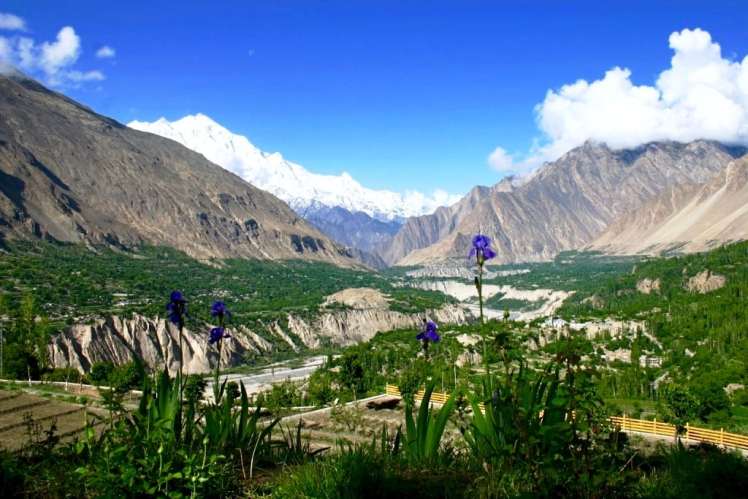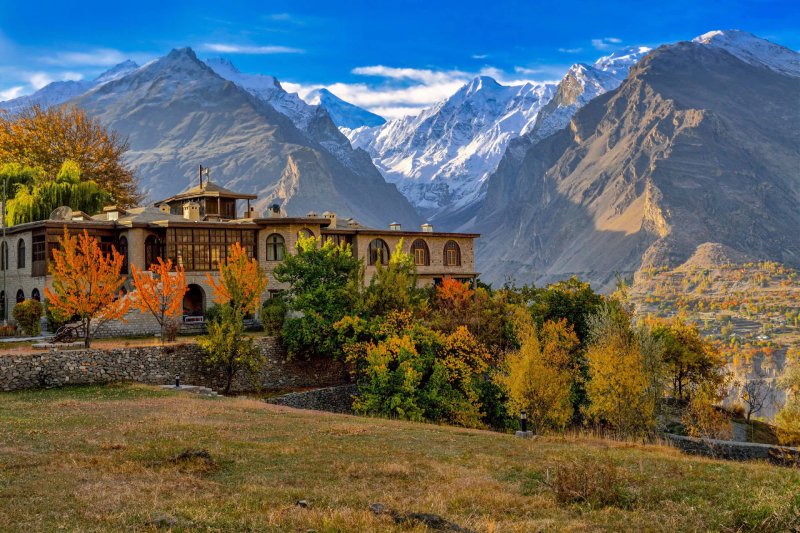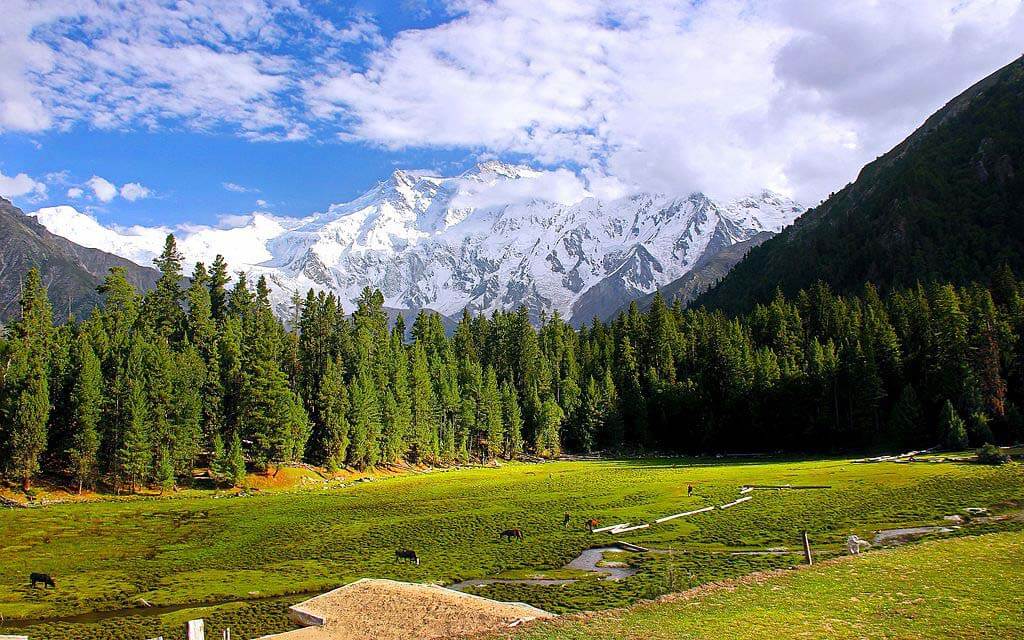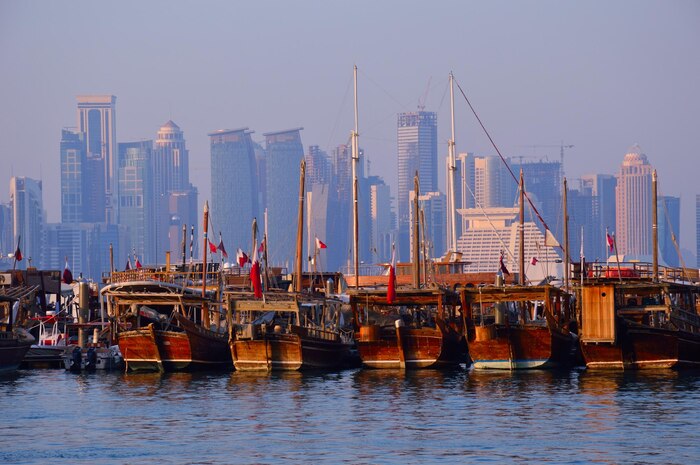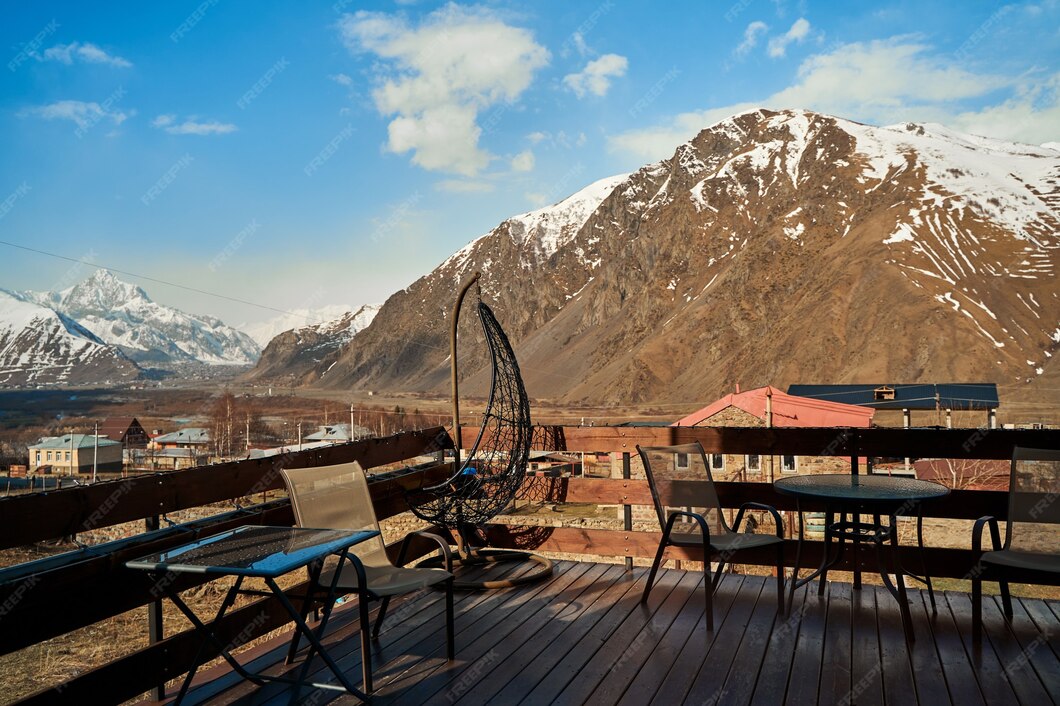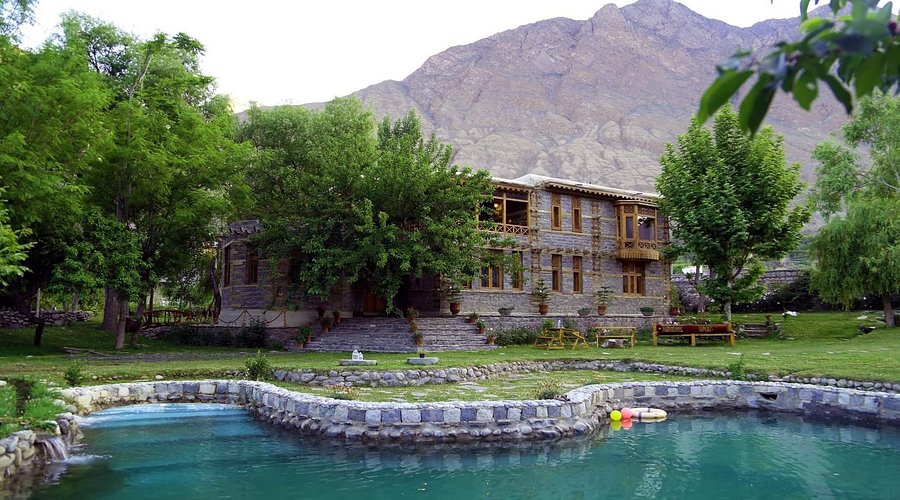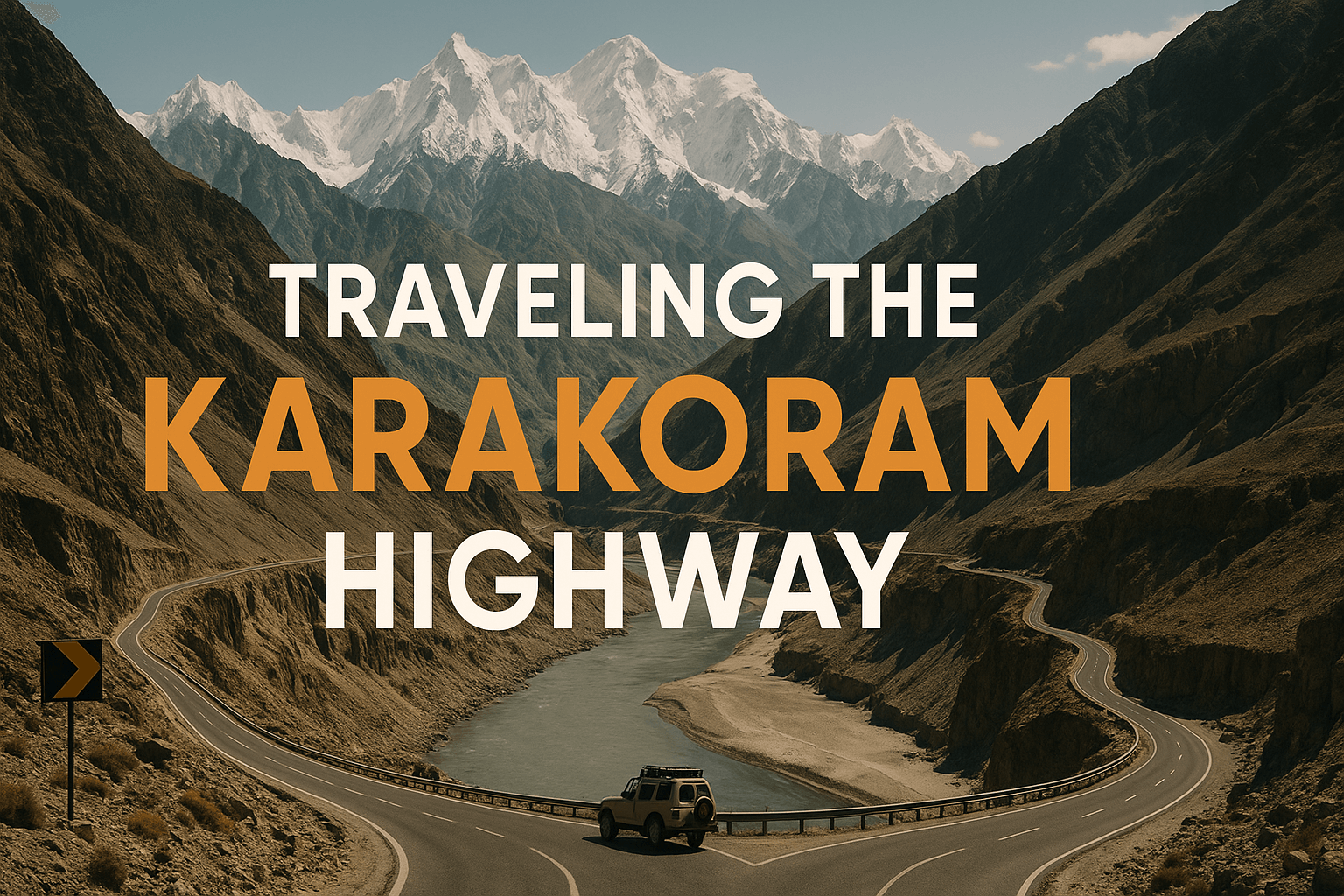
Traveling the Karakoram Highway - Ultimate Road Trip Guide
Why travel the Karakoram Highway?
The Karakoram Highway (KKH) is often described as the modern Silk Road and nicknamed the “Eighth Wonder of the World” for its engineering and scenery. Carved into some of the world’s highest mountains, it connects Pakistan and China and offers many of South Asia’s most unforgettable landscapes: turquoise lakes, dramatic peaks, high alpine plateaus and centuries-old mountain cultures. For international travelers seeking a combination of adventure, photography and cultural immersion, driving or touring, the KKH is a once-in-a-lifetime experience.
This guide focuses on the common Pakistan-side route (Islamabad → Gilgit → Hunza → Khunjerab Pass), but includes detours and practical tips to plan safely and comfortably.
Route overview: Islamabad → Gilgit → Hunza → Khunjerab Pass
The KKH stretches from Islamabad across the Karakoram Range toward the high border pass at Khunjerab, which leads into China’s Xinjiang region. Typical major stops on the Pakistan side are: Islamabad → Abbottabad/Mansehra → Chilas → Gilgit → Hunza (Gulmit/Karimabad/Passu) → Sost → Khunjerab Pass.
Distances and timing vary depending on road conditions and stops; the Islamabad→Hunza leg typically takes 2–3 days of driving with sensible stops, while adding Khunjerab and crossing into Kashgar requires additional planning and paperwork.
Highlights & must-stop attractions along the KKH
Hunza Valley (Karimabad & Gulmit)
Hunza is one of the KKH’s crown jewels: terraced orchards, Baltit and Altit forts, and panoramic viewpoints such as Eagle’s Nest make it a favorite for photographers and culture-lovers. If you’re basing yourself in Hunza, consider comfortable local hotels with mountain views. For example, Fortune One Hotel offers modern amenities and convenient access to Karimabad for international travelers.
Attabad Lake
Formed after a 2010 landslide, Attabad Lake’s striking turquoise water sits in a narrow canyon and creates some of the KKH’s most dramatic photo moments. Boat rides and lakeside stops are highly recommended.
Passu Cones & Borith Lake
The jagged Passu Cones are an iconic natural skyline; nearby Borith Lake is peaceful and ideal for birdwatching and golden-hour photos.
Khunjerab Pass
At over 4,600 meters, Khunjerab is one of the world’s highest paved border crossings. On clear days the expansive high-altitude landscapes are unforgettable but remember the pass is seasonal and weather-dependent.
Gilgit market & local culture
Gilgit town is a practical hub for supplies, markets and local culture. Stop for local handicrafts, traditional bread and to get a feel for mountain-town life.
Fairy Meadows (detour)
A detour off the KKH, Fairy Meadows offers one of the best viewpoints of Nanga Parbat. It’s a must for hikers and landscape photographers willing to add a couple of days.
Tip: Plan time for short walks and viewpoint stops. The KKH is best enjoyed slowly, with frequent photo and rest breaks.
Best time to travel the Karakoram Highway
Prime season: May to September, most reliable road access, milder weather, and peak daylight hours. Spring (April–June) brings blooming orchards in Hunza; Autumn (September–October) offers clear skies and autumn colors. Winter is harsh: many high passes close due to snow, flights are frequently canceled and landslide/avalanche risk rises.
Visas, permits & border information
International travelers must arrange a valid Pakistan visa before arrival (e-visa options are available for many nationalities). If you intend to cross into China at Khunjerab/Khunjerab Pass, you’ll need the appropriate Chinese visa and any additional permits border-crossing rules change and require advance planning.
Within Pakistan, routine police checkpoints are common; carry passport copies, visa pages and contact details. Some remote areas may request traveler registration your tour operator or hotel can advise.
How to travel the KKH: transport options
Private car or rented 4x4
Renting a 4x4 with an experienced driver is the most flexible and comfortable way to travel the KKH. Mountain driving demands local knowledge hiring a local driver who knows conditions and safe pullouts is wise.
Organized tours
Guided tours remove logistics stress: permits, accommodations and mechanics are handled for you. Tours vary from budget group options to private luxury itineraries.
Buses & shared transport
Public buses run segments of the highway and are budget-friendly, but they’re slower and less predictable. Shared jeeps are common for shorter legs.
Choice depends on budget, comfort needs and how much off-the-beaten-track exploration you want to do.
Sample itineraries (pick what suits your time)
6–8 day (highlights-focused)
- Day 1: Islamabad → drive to Besham/Chilas (overnight stop).
- Day 2: Continue to Gilgit (rest, market visit).
- Day 3: Gilgit → Hunza (Karimabad/Baltit Fort), relax at sunset viewpoint.
- Day 4: Attabad Lake → Passu Cones → Borith Lake.
- Day 5: Day trip to Khunjerab Pass (seasonal) or local trek.
- Day 6–7: Return leg or add Fairy Meadows detour.
10–14 day (in-depth road trip)
- Same as above with extra days for Fairy Meadows, Shimshal Valley, and more relaxed driving days and cultural stops.
Note: driving times in mountains are longer than flat-road estimates factor in stops, roadworks and weather delays.
Accommodation & food on the KKH
Towns along the route offer a range of stays: guesthouses and homestays in remote areas, mid-range hotels in Gilgit and Hunza, and better-equipped hotels in larger towns. For international travelers seeking comfort and reliable services in Hunza, the Fortune One Hotel (also listed on Booking) is a convenient option, check availability on their official site or the Booking.com listing.
Food is hearty and local: barley breads, apricot-based dishes, walnut treats and fresh mountain produce. In larger towns you’ll also find cafes serving international fare.
Tip: carry snacks and refillable water; remote stretches have limited dining options.
Safety, common risks & travel insurance
The KKH is a spectacular but demanding route. Common hazards include rockfalls, landslides, narrow road sections and fog or heavy rain that reduce visibility. Night driving is not recommended in many segments.
Recommended precautions: hire experienced drivers, avoid travel during heavy rain or known landslide windows, keep your vehicle well-serviced, and buy travel insurance that covers medical evacuation and mountain rescue. Check your government’s travel advisory for the latest safety guidance before departure.
Packing checklist & practical tips
- Layered clothing: warm nights and strong sun by day.
- Good walking shoes, hat, and sunglasses (UV can be intense).
- Portable power bank, plug adaptors and spare phone battery.
- First-aid kit, altitude sickness meds if planning high passes.
- Cash in PKR (ATMs are limited outside main towns).
- Offline maps and a physical route printout for backup.
Further reading & useful links
- Karakoram Highway travel guide: Lonely Planet
- Karakoram Highway: National Geographic overview
- Silk Roads & Karakoram Highway: UNESCO context
- More on Hunza: Complete travel guide
- Why Fortune One Hotel stands out among Hunza hotels
For booking and a comfortable base in Hunza, check the official hotel website or their booking page: Fortune One Hotel | Booking.com listing.
Ready to plan your Karakoram Highway trip?
The KKH is an epic road trip for adventurous international travelers. Start by choosing your travel window, book a reliable local base in Hunza, and hire experienced drivers or a guided tour to make the journey safer and more enjoyable. If you want more localized Hunza planning and comfortable staying options, explore the detailed Hunza guide and hotel resources linked above.


